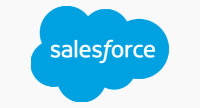We've helped you sequester carbon and create sustainable livelihoods for over 15 years. Now there's a new way to offset that you can trust.







A comprehensive climate change solution. For companies seeking a significant and visible role in environmental stewardship and sustainability. Your offer combines tangible environmental benefits with marketing and HR advantages, making it an attractive and responsible investment.

We've partnered with carbon emissions calculations experts to provide you with hassle free ways to calculate the emissions you have to offset.
We plant the trees in Tanzania to sequester 1 ton of CO2 per tree and create sustainable livelihoods. You'll get community stories and updates.
With real-time, blockchain-backed dashboards, see the tangible impact of your contributions, providing clarity and trust in a complex market.

Access to all or part of 7,000 hectares, each yielding 350-500 credits. When the hectares in Phase 1 are claimed, the next phase will open with higher prices.
For your zone you will get up to 500 carbon credits per hectare. In addition to the carbon reports you'll get updates and stories on all community development, sustainable livelihoods and reforestation impact from your zone.


The most verifiable and data backed credit on the market. Independent validators on Open Forest Protocol’s blockchain backed platform verify and challenge the accuracy of our data for your peace of mind.

We ensure transparency and integrity in the carbon market, making every climate action traceable and impactful.

Nature Based Carbon Credits
Our carbon credits support local farmers, enhance food production, restore degraded lands, enrich soil nutrients, advance agroforestry, reduce soil degradation, and revitalize ecosystems and habitats.

Communication Strategy:
Share your story with media and tools for powerful sustainability messaging to showcase your zone’s impact.

Cost-Benefit Optimization:
Free use of eGifts and Forest Profile engagement boosting your ROI.

Holistic Impact:
Beyond Carbon: Your credits support community development and conservation.

Priority Support:
Dedicated account manager always available for questions, marketing support and media preparation to communicate your narrative.

One-on-One Consultations:
Expert support in tackling hurdles like uncertainty about impact, navigating regulations, integrating carbon offsetting into sustainability strategies, and overcoming skepticism

Comprehensive Reporting Service:
Reports on the effectiveness of your carbon credits, ensuring compliance with sustainability goals.
Our science-based, technology enabled, transparent MRV services goes beyond carbon market standards to ensure:
Additionality - analysis of past and currently land use via satellite data
Transparency - real time data access via dashboards, APIs, and phone application
Compliance - monitoring and verification is compliant with the best methodology

Example: Buy 100 Ha for $14,000 each and you'll get upto 50,000 credits.
Pay as little as 30% upfront and 70% on an installment plan to fit your needs.
Phase 2 conditions are subject to change and price increases.
"*" indicates required fields

We really liked their concept ‘you plant one, we plant one’. It is a simple yet very effective campaign that allows us to be part of something bigger. This ties in well with our sustainability agenda and how we can do things concretely to mitigate our impact on the environment.

As our employees are located all over the world, we want to engage in a fulfilling activity that helps us stay connected. Planting trees through ForestNation and engaging with one another in the Appway Forest gives us another possibility to stay connected while strengthening the planet’s ecosystem.

At TD Bank, we are committed to making our world a little healthier and greener for the next generation. While working with ForestNation, we were able to provide our customers with trees to plant at home, while supporting vital tree plantings around the world.
